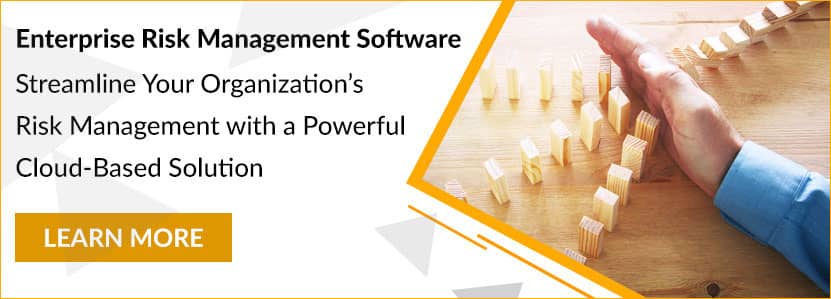Home/ Blog / Managing Compliance Risks: Essential Tips for a Systematic Approach
Managing compliance risk can feel like a daunting task, yet it is necessary to ensure smooth operations for banks and financial organizations. As global regulations and accessibility increase so do compliance risks. Depending on the sector, internal and external regulations dictate what a business can or cannot do. They also keep a business aware of best practices while managing daily operations.
Failure to comply with the designated rules and regulations results in detrimental effects including penalties and closures. A crucial aspect of managing compliance risk is to take a systematic approach to identify, mitigate, and review compliance risks faced on an ongoing basis.
Importance of a Compliance System
An effective compliance management system keeps an organization aligned with the right regulations governing the industry. It provides a visual insight into the organization’s efforts for compliance. Compliance teams have a harder time tracking and monitoring the operations and roles within the organization without a systematic approach.
A good regulatory compliance management system proactively addresses all the risks while meeting multiple regulatory requirements. A compliance system serves as a central place where all the data storage, management, and sharing takes place. Organizations can refine and restrict data access to employees and ensure that specific members have access to intended information with complete authority.

Managing Compliance Risk
Begin with Risk Assessment
Managing compliance risks is impossible if you do not know the organization’s true risks. Your compliance efforts will yield little to no results if a risk assessment is not justified thoroughly and scientifically. In short, a compliance program’s policies and due diligence become useless if it does not address the right risks.
Compliance departments often have limited resources and must remember there is no one-size-fits-all approach to risk assessments. Repeating the same approach will eventually lead to wasting resources or their allocation in low-risk markets. It is thus essential to assess the risk level initially to prioritize and address it appropriately.
Managing compliance risks is an essential feature for a financial organization to ensure a smooth operation with minimized downtime and better results. Share on XManaging Compliance in Accordance with Third Parties
Every business deal with third parties, and those numbers vary significantly according to business nature, especially among financial institutions. Performing ongoing due diligence for third parties is essential as this is where many compliance risks arise.
A robust due diligence system should be central to an organization’s attempt to manage compliance risks. Due diligence must become streamlined, integrated, and automated when the organization deals with third parties. An end-to-end solution will enable you to automatically screen and categorize third parties.
Understand the Latest Enforcement Policies
Compliance risks usually involve money laundering, anti-corruption, data protection, or expert control laws. Understanding the latest requirements imposed by laws and regulations should be a part of the risk assessment process. Besides understanding the letter of the law, it is also crucial to remain updated with the latest enforcement policies released by the regulatory bodies. Compliance teams can tweak compliance programs to leverage the policies whenever issues arise.
Build a Culture of Ethics
Every compliance team wants to shape the compliance system according to the highest expectation set by the authorities. However, losing track of problems or failing to align with policies can occur. It requires an organization-wide effort to set the ethics with compliance as the core of the business.
Senior leadership must communicate with all the employees the type of ethical conduct expected. Practically, the delivery of training and team-building activities supports this notion by ensuring mitigation of conflicts and reduction of manual processes to drive engagement throughout the compliance efforts.
Regular Updates of Compliance Efforts
Compliance efforts must remain updated with the continuously changing financial environment. Managing compliance is not a one-time exercise, as compliance teams need to re-evaluate all the policies and procedures to ensure it covers all the risk factors that may or may not pose a threat to an organization.
Compliance officers must ask themselves whether there is a need to evaluate compliance programs. The best time for this exercise is when a business is about to expand into a high-risk market.

Conclusion
Managing compliance risks is difficult as it requires operating complex procedures and processes. Automating routine compliance management processes eliminates frustrations and provides faster insight into data. It allows for improving compliance programs and time for strategic planning with internal changes.
A good starting point for any organization’s risk monitoring and control is to set a systematic approach with automated solutions. Financial institutions can benefit from risk and compliance software to handle the challenges without compromising organizational objectives. If you require a regulatory change management solution, a third-party risk management solution, monitoring and testing, risk assessments, KRI (Key Risk Indicator) monitoring, or issues management, Predict360 is designed for banking and financial services. Learn more today.
Request a Demo
Complete the form below and our business team will be in touch to schedule a product demo.
By clicking ‘SUBMIT’ you agree to our Privacy Policy.



